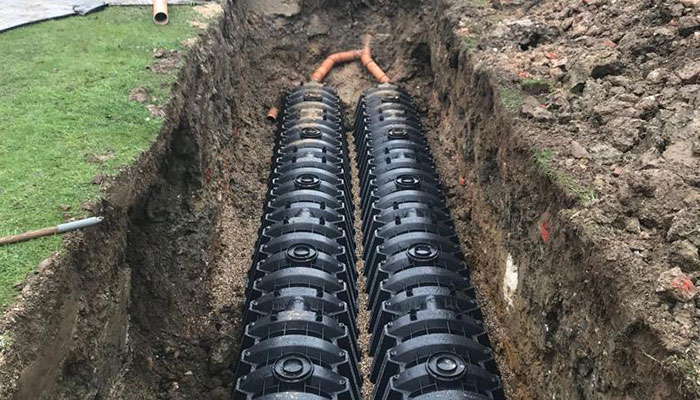When it comes to defining the differences between septic tanks and sewage treatment plants, some are more fundamental than others.
And one of the clearest distinctions for UK properties is the requirement (or not) for a soakaway.
A soakaway is typically a sizeable pit dug and filled with rubble, aggregates or other materials and acts as a measure against excess surface water.
The water is collected and dispersed throughout the surrounding soil, undergoing further filtration in the process.
Do I need a soakaway?
If your property has an existing septic tank then there will likely be a soakaway in situ, as required legally.
This is because water released by such systems has only undergone a single stage of treatment.
This means it can still pose harm to the environment, not to mention smelling pretty foul.
As mentioned above, the soakaway will provide an extra layer of filtration before the water can be released.
In contrast, the discharge from modern small sewage treatment plants has been processed in more stages, so shouldn’t need a soakaway.
If you’re unsure of what requirements your property has, please consult with the Binding Regulations available on the .gov.uk website.
How are sewage treatment plants different from septic tanks?
A small sewage treatment plant comprises several different sections, rather than the single large underground container typified by septic tanks.
Initially, wastewater enters the first tank where the solids are separated from the liquids, which flow into the next chamber.
This is in contrast to septic tanks, where solids are simply left to sink to the bottom and settle, forming a sludge.
The resulting separate wastewater will flow into a drainage field, where contaminants and impurities are removed before it is released into the soil.
But in a sewage treatment plant, compressed air is injected into the liquid via a process known as ‘aeration’, which encourages bacteria.
This bacteria then ‘cleans’ the liquid to a much higher standard than a septic tank soakaway can achieve.
It’s even approved by the Environment Agency for dispersal into a running ditch, stream or lakes with flowing water.
This means that a sewage treatment plant not only removes the need for a soakaway but is also more eco-friendly than filtering raw sewage through soil.
Need to know more about soakaways?
If you’re still unsure about whether your current system requires a soakaway, or if your planned replacement or upgrade will, help is available.
If you’d like to speak to a member of our helpful team or enquire about arranging a site survey visit, please get in touch.
